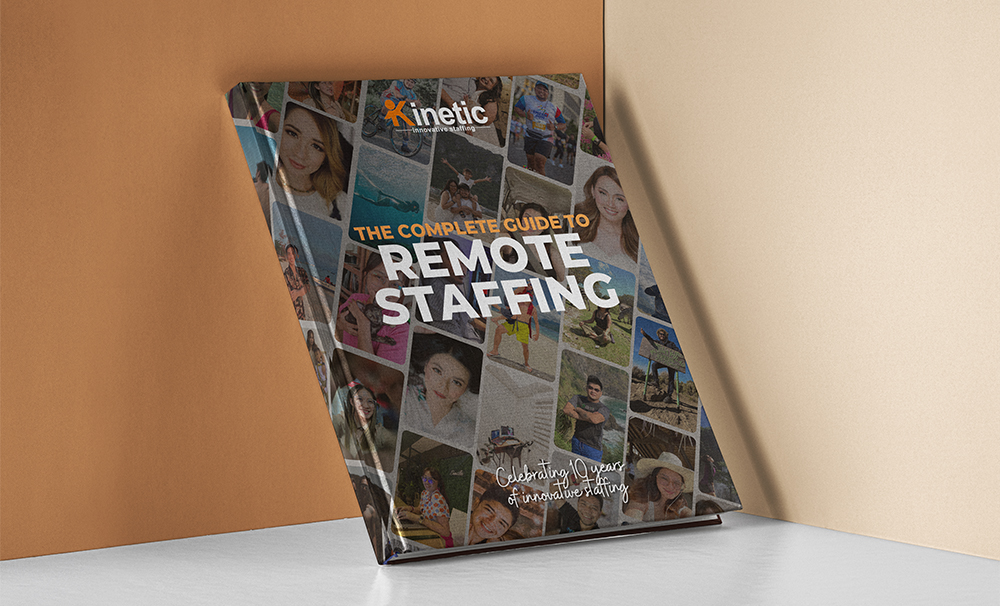Remote work is not the future.
It’s the present.
Companies who hire remote workers are reaping all the flexibility and efficiency it offers.
Yet, a critical question remains: How many remote workers do you actually need to ensure your organization thrives in this landscape?
So in this article, we dive into remote workforce planning to help you determine if your business has the optimal allocation of talent.
This involves a combination of quantitative and qualitative metrics—with the right number of remote workers varying depending on the nature of your business, your specific objectives, and the roles involved.
Let’s now look at 6 ways you can find that elusive “sweet spot.”
#1 Workload Analysis
This is the foundation of workforce planning and involves looking into the nitty-gritty of the job to determine how many persons are required to perform the tasks.
Honestly, it’s hard work but worth your effort because the process of thinking through the different roles will yield plenty of insights that will ultimately rebound to your benefit. In short, you’ll get back what you put in.
Here are the 4 general steps to Workload Analysis:
1) Task Identification & Prioritization
You begin by creating a comprehensive list of tasks in your business.
On any given day, what are the different things that people do to run operations?
So for example, in an online retailer business, the general categories might include things like Administrative Tasks, Customer Service & Support, Sales & Marketing, Production etc.
Under the label “Administrative Tasks,” you might have things like:
- Email management
- Appointment scheduling
- Data entry
- Document filing and organization
- Expense reports processing etc.
2) Task Assessment/ Evaluation
After having your list, you now look into each one more carefully. Identify which ones are critical to your core business and which ones are less urgent and can be deferred.
In this step, you need to answer questions like:
- How complex is the task?
- How often is it done in a day?
- How long does it take?
- How complex is the task?
- What skills, experience, or expertise is needed to perform the task?
- Which tasks should be grouped and assigned to a single person?
This will give you insights into the complexity of the workload.
3) Resource Allocation
After learning so much about the different tasks, you are now in a better position to make educated guesses on how many persons are required to realistically do the job. Hire intentionally.
Assign groups of tasks to specific team members or roles within your organization, in view of their skills capabilities, and availability.
4) Feedback and Iteration
Nobody gets it perfectly the first few times around. So you need to make some adjustments as the weeks roll.
You may have to do things like transfer some tasks to a different person, change how tasks are actually done, streamline your process, or even get a different person for the job.
#2 Use Key Performance Indicators (KPIs)
There are 3 main things you need to look at to help determine the number of your remote workforce:
1) Productivity—High volume will require more people. Highly complex tasks will require more workers as well.
2) Quality of Work—If your business strategy rests on excellent quality, or in providing specialized service, then those levels of service would require more people.
3) Timelines—Speed requires more workers. If you want to cut delays and lags, or you want to provide 24/7 products or services, then that would require more remote people covering the different time zones.
#3 Employee Feedback
One of the best ways to know what’s going on in the business is by asking the people who are on the frontlines responsible for day-to-day operations.
Solicit feedback from remote employees to gauge their workload, stress levels, and overall job satisfaction. You can do this through surveys, interviews, focused group discussions, etc. With technology, distance is no reason not to get these insights.
But even if you don’t ask employees, their behaviour will speak a ton on workplace realities.
Signs of burnout like absenteeism, reduced productivity, errors, missed deadlines, high turnovers, customer complaints, and interpersonal conflicts, could mean that your team is understaffed or overworked. Address this immediately before it deals more damage.
#4 Budget and Cost Analysis
This is more on the side of ensuring that you have not hired too many remote workers.
In theory, you can hire as many remote workers as you can. You just need to ensure that it’s financially sustainable and in line with your organization’s goals.
Budget and cost analysis involves a detailed examination of the financial aspects of your organization’s operations and has something to do with things like cost breakdowns, budget allocations, ROIs, scalability, etc.
An additional remote worker can impact your finances either way. His or her productivity can result in more money entering your coffers, or the cost of having him or her can bleed you out. (Fortunately, remote workers, as a rule, are much more affordable than local hires.)
#5 Benchmarking
A quick and dirty way of determining how many remote guys you need is to look at how similar businesses are doing it.
By this point, you’re not the first business to be working with remote professionals. Many have gone through the trial and error of determining staff levels.
Compare your organization with industry benchmarks to see how you fare with other companies who hire remote workers. It’s not ideal, but it gives you a good starting point.
So, for example, if you’re a real estate company, look for others in your area that are of the same size, that have similar operations. Ask around and learn how many they have locally. This would give you a clue as to how many are supporting their operations remotely.
#6 Scalability and Growth Plans
Revisit your business strategy and long-term objectives. How does remote work align with your growth plans?
Consider your organization’s growth objectives and scalability plans to get the right mix of remote workers.
Analyse growth projections and potential scenarios. Is there a market expansion or a product launch in your future? Do you anticipate changes in customer demand? These projections will guide you in estimating your future workload.
(In this case, you’re not just looking at numbers per se, you are also looking at the types of roles you will be needing in the future.)
For companies who hire remote workers, workforce planning is not a perfect practice and there is plenty of room for iterations. But by using one or a combination of these strategies, you can have a suitable number of remote workers that help you reach your business goals.
Kinetic Innovative Staffing helps companies around the world find Filipino remote workers. We help organizations find ideal candidates for a wide range of roles.
So for example, if your business needs seasoned accounting candidates, you can see our catalogue of Rockstar Accountant Candidates on offer. (Simply click here and we’ll send you the full list.)
With a database of over 4 million Filipino remote workers, Kinetic can provide your organizations with seasoned professionals from lawyers and engineers, to software developers and system administrators. We can provide as many remote professionals as you require.
Remote workers save companies, on average, 70% of their labour costs…without any drop in the quality of work.
If this is something you would like to explore, do not hesitate to get in touch with us and we’ll provide you with more information.
Kinetic Innovative Staffing has been providing hundreds of companies in the Asia Pacific, North America, the Middle East, and Europe with professionals working remotely from the Philippines since 2013. Get in touch to know more.




